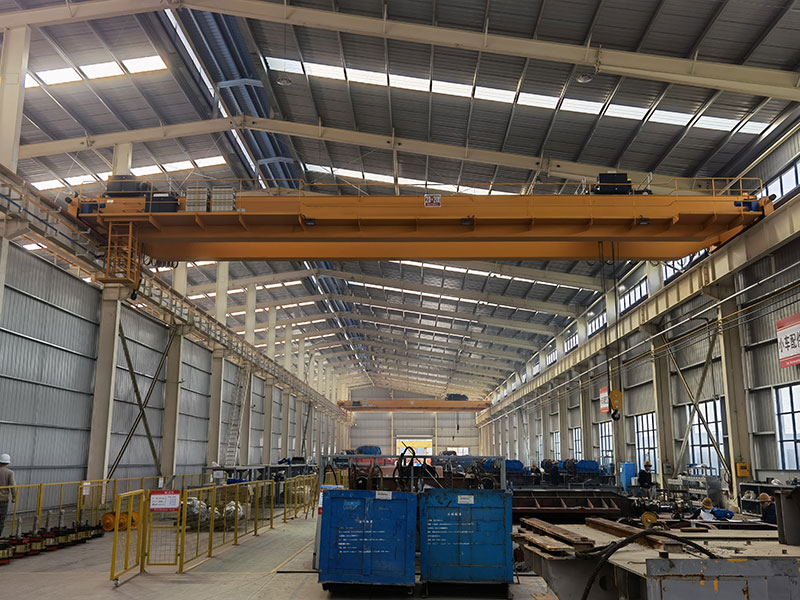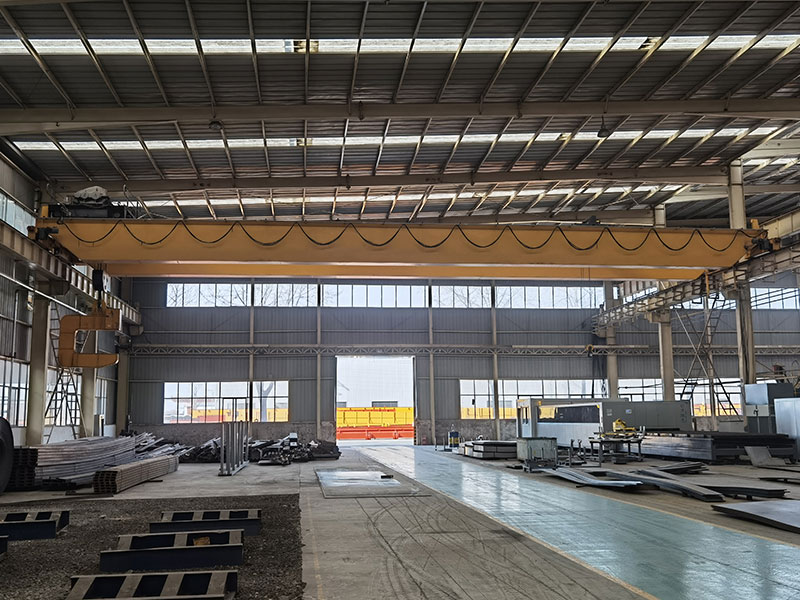When it comes to purchasing an Electric Overhead Traveling (EOT) crane, one of the most significant factors influencing its price is its lifting capacity. EOT cranes are used for heavy lifting and material handling across various industries, from manufacturing plants to warehouses and construction sites. The lifting capacity determines the weight the crane can safely lift, and this capacity has a direct correlation with the price of the crane. In this article, we will explore how the capacity of an EOT crane influences its price, with a focus on different capacity ranges such as 10 tons, 30 tons, 50 tons, and more.

1. What is an EOT Crane?
Before diving into how capacity impacts the EOT crane price, it is essential to understand what an EOT crane is. An Electric Overhead Traveling (EOT) crane is a type of industrial crane typically used in manufacturing and warehouse environments. It consists of two main components: the bridge (which runs on rails along the building) and the hoist (which moves along the bridge). EOT cranes are powered electrically and are used to lift heavy loads from one point to another within a designated area.
EOT cranes come in various sizes, with different lifting capacities to meet the specific needs of businesses and industries. These cranes are widely used in industries such as steel, automotive, construction, and logistics, among others.
2. How Capacity Affects the Price of EOT Cranes
The price of an EOT crane is highly dependent on its lifting capacity. As the lifting capacity increases, the complexity of the crane’s design, construction, and components also grows. Let’s explore how this capacity influences the cost of the crane.
a) The Basic Rule of Thumb
The price of an EOT crane typically increases as the lifting capacity increases. This is because large overhead cranes require stronger components, more powerful motors, and more robust structural elements to ensure that they can safely lift heavier loads. A crane with a higher capacity will need to be built with materials that can withstand the greater forces involved in lifting and moving heavier loads.
For example, a 10-ton EOT crane will be less expensive than a 50-ton EOT crane because the design and components for lifting 10 tons are relatively simpler, requiring less material strength, smaller motors, and less specialized engineering compared to a 50-ton crane.
b) Structural Considerations and Material Strength
EOT cranes with higher capacities require stronger, more durable materials. A 10-ton crane might use mild steel for its main structural components, but a 50-ton crane would require high-strength steel or other advanced materials to ensure that it can handle the load without failure. These upgraded materials come at a higher cost, which directly increases the price of the crane.
For example:
- A 10-ton crane may feature a smaller bridge frame with lower-grade steel.
- A 30-ton crane will require a larger and more robust frame with stronger welding and reinforcements.
- A 50-ton crane or higher will have an even more substantial structure, including enhanced reinforcements, thicker steel beams, and higher-grade materials to support the extra weight and strain.
c) Motor Power and Hoist Design
The lifting capacity of the crane also determines the type and size of the motors required to operate it. Larger cranes need motors with higher horsepower to provide the necessary power for lifting heavier loads.
- A 10-ton crane will use smaller motors and a simpler hoisting mechanism.
- A 30-ton crane will require larger motors and a more sophisticated hoisting system to handle the additional load.
- A 50-ton crane will need powerful motors capable of lifting heavy loads without compromising on safety or reliability. These motors may also require additional cooling systems to prevent overheating due to the increased power requirements.

3. Price Breakdown for Different Capacities
Let’s break down the price range for EOT cranes with different capacities, keeping in mind that the prices can vary depending on the manufacturer, the features, and additional customization options.
10-Ton EOT Crane
A 10-ton EOT crane is considered light-duty and is suitable for smaller operations like warehouses, light manufacturing, or small factories. These cranes are simpler in design and have fewer complex components compared to larger cranes. On average, the 10 ton overhead crane price can range from $10,000 to $30,000 depending on the features, brand, and region. Basic 10-ton cranes can have a simpler control system, and they typically require less maintenance and repair over time.
30-Ton EOT Crane
A 30-ton EOT crane is a medium-duty crane often used in medium-scale factories or for construction activities. The increased weight capacity necessitates more powerful motors, a larger frame, and enhanced safety features. The 30 ton overhead crane price typically ranges from $30,000 to $70,000. This crane will have features such as higher-quality motors, larger control systems, and improved safety systems, including overload protection and better braking mechanisms.
50-Ton EOT Crane
A 50-ton EOT crane is considered heavy-duty and is used for demanding applications in industries like steel manufacturing, heavy construction, and heavy equipment handling. These cranes require advanced engineering, stronger materials, and more complex systems. The price of a 50-ton EOT crane can range from $70,000 to $150,000, depending on the additional features and customization required. At this capacity, the crane may include features like higher-grade steel for the structure, multiple hoist configurations, advanced control systems, and enhanced safety features like collision detection and anti-sway systems.
Cranes Over 50 Tons
For cranes that exceed 50 tons in capacity, such as 100-ton or even 500-ton cranes, the price rises significantly. These cranes are used in very specialized industries, such as shipbuilding, large construction projects, and heavy materials handling. The price for these cranes can easily exceed $150,000 and go up to several million dollars, depending on the complexity of the crane and the specific requirements of the operation.
4. Additional Factors That Influence EOT Crane Price
While the lifting capacity is the primary factor influencing price, there are other elements that also contribute to the final cost:
a) Customization and Special Features
Customization adds to the cost of the crane. Features such as remote controls, anti-sway systems, enhanced safety mechanisms, and customized control panels all increase the price. The more tailored the crane is to specific needs, the higher the price will be.
b) Manufacturing Standards and Quality
Crane manufacturers with higher standards of quality control and safety tend to charge more for their products. Cranes built with international standards in mind, like European or American designs, tend to be more expensive than those manufactured under local or less stringent quality standards.
c) After-Sales Service and Warranty
EOT cranes are heavy-duty machines, and maintenance plays a crucial role in their lifespan and performance. Cranes with comprehensive after-sales services, extended warranties, and ongoing maintenance packages are generally priced higher.
5. Conclusion
In conclusion, the capacity of an EOT crane is one of the most significant factors that determine its price. As the lifting capacity increases, so does the complexity of the crane’s design, the quality of materials used, the power of the motor, and the overall cost. Businesses must carefully consider their lifting needs, the type of materials they handle, and the frequency of crane use before deciding on the appropriate crane capacity.
From the budget-friendly 10-ton cranes to the robust 50-ton cranes and beyond, understanding the relationship between lifting capacity and price will help businesses make informed decisions. While larger cranes come with a higher upfront cost, they offer the ability to lift heavier loads and perform more demanding tasks, making them a valuable investment for industries requiring high-capacity lifting solutions.